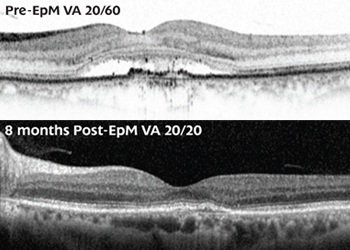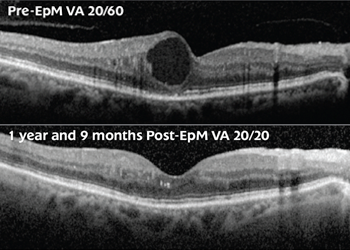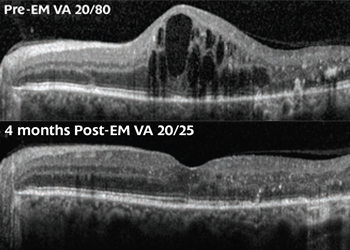The PASCAL Vision Resource page is a great destination for finding useful information about the PASCAL method and tissue-sparing technologies like Endpoint Management (EpM) and Pattern Scanning Laser Trabeculoplasty (PSLT).
PASCAL Technology | Endpoint Management | Case Studies | Pattern Scanning Laser Trabeculoplasty | COVID-19 Resources
PASCAL Technology
Download a Clinical and Scientific Dossier on Sub-threshold Laser Therapies Using the PASCAL Laser System.
The process of selectively delivering a pulse with high speed galvo mirrors enables PASCAL to achieve short pulse duration with every spot in the pattern delivered at the same power level resulting in more consistently uniform burns than with conventional lasers.
Endpoint Management is a proprietary feature that uses a unique process to control power and duration more precisely, specifically at non-visible treatment levels. This allows optimization of therapeutic effects at these lower intensities. By using Endpoint Management with the PASCAL lasers, you can adjust the treatment from barely visible down to various degrees of less damaging levels, even down to completely non-detectable points while maintaining clinical efficacy. All of this adds up to safer, more effective treatment for your patients.
Learn more about Dr. Yannis Paulus’ recent EpM study on PASCALⓇ Endpoint Management™ for the treatment of DME and how it reduces the burden of anti-VEGF injections.
Dr. Gonzalez discusses EpM and the current landscape of tissue sparing laser therapies.
Dr. Choudhry discusses the real world utility of Endpoint Management.
Case Studies
See how PASCAL has made a difference in the lives of patients.
For a complete list of cases and guidelines, please download the Endpoint Management Guide.
Central Serous Retinopathy

61 year old patient with visual acuity 20/60. 8 months after Endpoint Management visual acuity is 20/20. Download
Diabetic Macular Edema

64 year old patient with visual acuity 20/60. 1 year and 9 months after Endpoint Management visual acuity is 20/20. Download
Diabetic Macular Edema

54 year old patient with visual acuity 20/80. 4 months after Endpoint Management visual acuity is 20/25. Download
Pattern Scanning Laser Trabeculoplasty (PSLT) is a computer-guided therapy that provides precise placement of the laser patterns along the trabecular meshwork, independent of visibility of the lesions. PSLT provides rapid, precise, and minimally traumatic (sub-visible) computer-guided treatment with exact placement of the patterns. The patterns readily align to the curve of the trabecular meshwork, allowing faster and easier applications compared to other laser modalities. Being precise has never been so effortless.
Download PSLT Study Data and Case Studies published in Glaucoma Today.
Learn how this tissue sparing laser treatment for reducing IOP provides rapid, precise, and minimally traumatic computer guided treatment.
COVID-19 Resources
Dr. Belalcazar-Rey shares clinical successes using PSLT for the reduction of IOP.
At Topcon Medical Laser Systems, we’re committed to our valued PASCAL customers in good times and bad. During this time, many practices are temporarily closed or operating with reduced hours to minimize the spread of the coronavirus. We’ve compiled a number of resources and videos from fellow PASCAL doctors who are sharing the processes and protocols they have in place in order to adapt to the current crisis.
Please click here for a COVID-19 statement from Topcon Medical Laser Systems.
The AAO has also shared some practice management resources.
We sat down with Dr. Yannis Paulus (University of Michigan Ann Arbor, MI) to learn about his recent study on PASCALⓇ Endpoint Management™ for the treatment of DME and how it reduces the burden of anti-VEGF injections during COVID-19 and beyond. Download full interview.